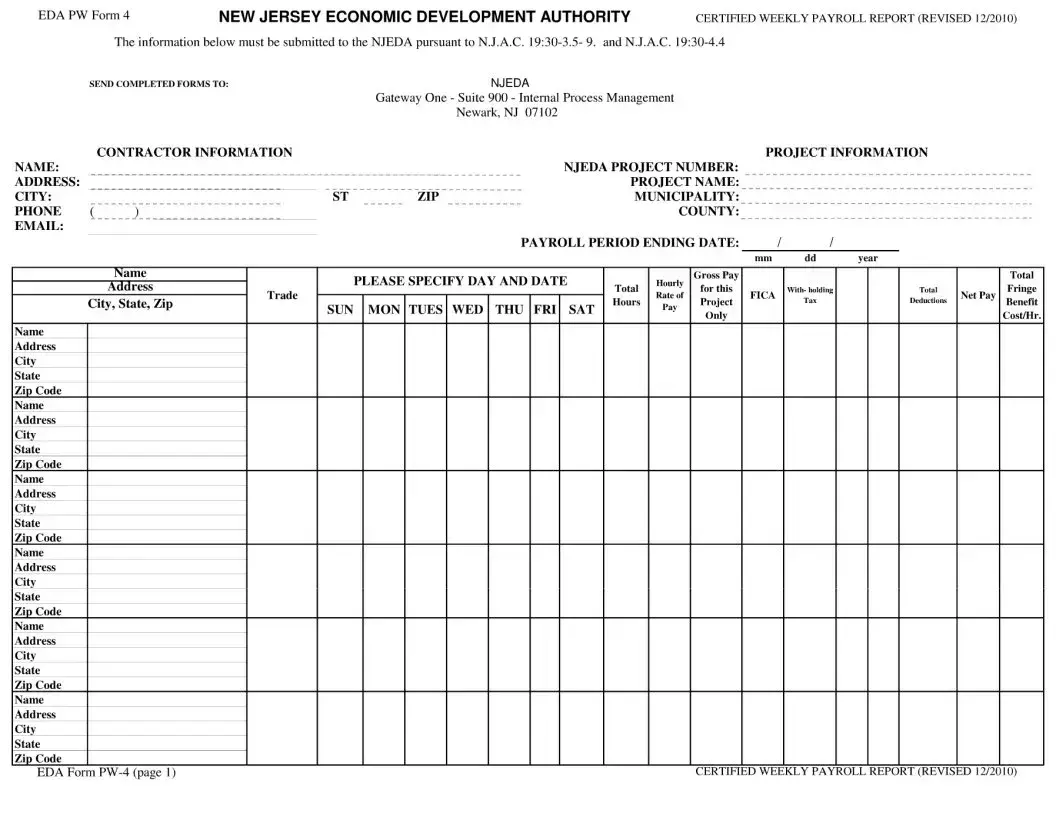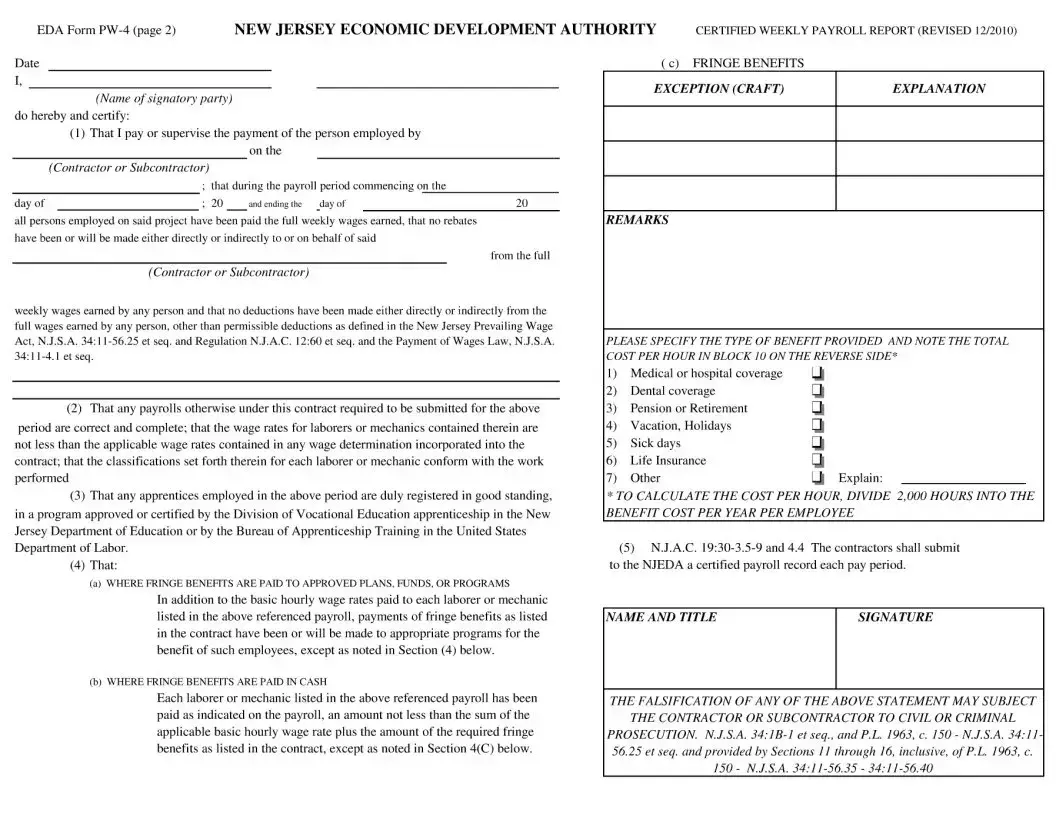The NJEDA Certified Payroll form shares similarities with the Federal WH-347 Payroll Form, widely used by contractors and subcontractors working on federal construction contracts. Both documents require detailed employee payroll information, including hours worked, wage rates, deductions, and the net wages paid for each week of work on a project. This information helps ensure compliance with the Davis-Bacon Act, which mandates the payment of prevailing wages on public works projects.
Another document akin to the NJEDA Certified Payroll form is the State Prevailing Wage Report. Various states have their own versions that contractors must complete when working on state-funded construction projects. Like the NJEDA form, these reports collect data on the wages paid to workers, categorizing it by trade and job classification to monitor adherence to state-specific prevailing wage laws and regulations.
The Employee Wage Deduction Authorization Form is also comparable to the NJEDA Certified Payroll form. This form documents any deductions from an employee's wages, such as for uniforms, tools, or benefits, with the employee's consent. Although its primary focus is on deductions rather than comprehensive payroll reporting, it similarly ensures transparency and compliance with labor laws regarding permissible wage deductions.
Similarly, the IRS Form W-2, the Wage and Tax Statement, shares objectives with the NJEDA Certified Payroll form. The W-2 form provides an annual summary of wages paid and taxes withheld for each employee, serving as a key document for tax compliance. While the scope is broader and serves a different regulatory purpose, both forms play crucial roles in reporting accurate wage information and supporting legal compliance.
The Project Work Hours Report, often used by project managers, also parallels the NJEDA Certified Payroll form. This report tracks the total hours worked by employees on a project, which is essential for monitoring project costs and productivity. Though it may not include detailed wage data, its function in labor reporting and management intersects with the objectives of the NJEDA form.
Comparable to the NJEDA Certified Payroll form is the Employee Time Sheet. This document records the daily hours an employee works, which is foundational for preparing payroll. Like the NJEDA form, time sheets ensure that employees are paid for all the hours they work, providing a record to reconcile wages paid with hours worked, albeit in a more abbreviated format.
Lastly, the Union Reporting Form, required by some labor unions, resembles the NJEDA Certified Payroll form in its goal of tracking and reporting wages and hours worked by union members. These forms help ensure that contractors comply with collective bargaining agreements, much like the NJEDA form’s role in enforcing prevailing wage laws. Although serving different audiences—the union versus a government agency—their core function of safeguarding worker rights through detailed payroll reporting aligns them closely.

